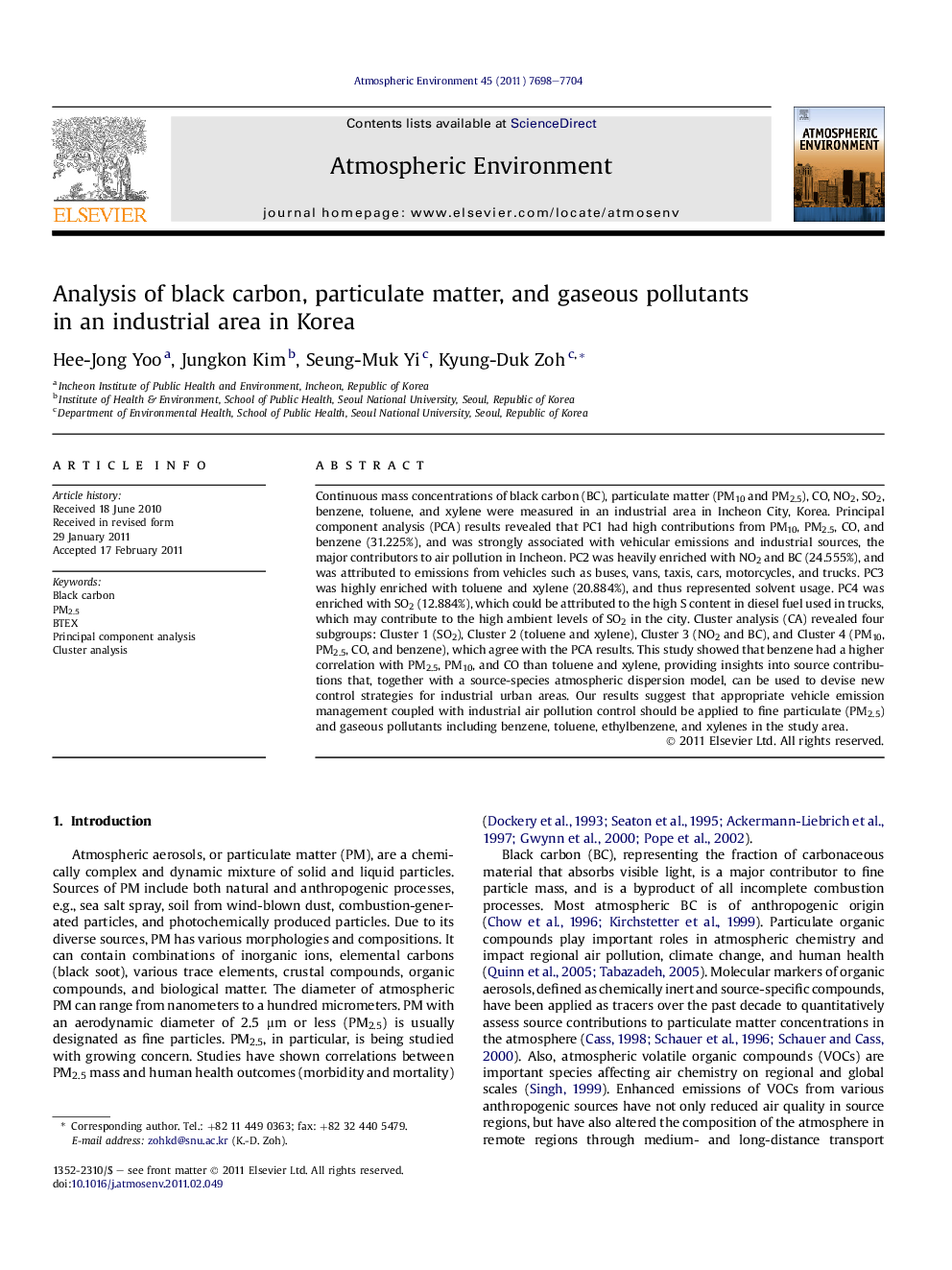| کد مقاله | کد نشریه | سال انتشار | مقاله انگلیسی | نسخه تمام متن |
|---|---|---|---|---|
| 4439398 | 1311017 | 2011 | 7 صفحه PDF | دانلود رایگان |

Continuous mass concentrations of black carbon (BC), particulate matter (PM10 and PM2.5), CO, NO2, SO2, benzene, toluene, and xylene were measured in an industrial area in Incheon City, Korea. Principal component analysis (PCA) results revealed that PC1 had high contributions from PM10, PM2.5, CO, and benzene (31.225%), and was strongly associated with vehicular emissions and industrial sources, the major contributors to air pollution in Incheon. PC2 was heavily enriched with NO2 and BC (24.555%), and was attributed to emissions from vehicles such as buses, vans, taxis, cars, motorcycles, and trucks. PC3 was highly enriched with toluene and xylene (20.884%), and thus represented solvent usage. PC4 was enriched with SO2 (12.884%), which could be attributed to the high S content in diesel fuel used in trucks, which may contribute to the high ambient levels of SO2 in the city. Cluster analysis (CA) revealed four subgroups: Cluster 1 (SO2), Cluster 2 (toluene and xylene), Cluster 3 (NO2 and BC), and Cluster 4 (PM10, PM2.5, CO, and benzene), which agree with the PCA results. This study showed that benzene had a higher correlation with PM2.5, PM10, and CO than toluene and xylene, providing insights into source contributions that, together with a source-species atmospheric dispersion model, can be used to devise new control strategies for industrial urban areas. Our results suggest that appropriate vehicle emission management coupled with industrial air pollution control should be applied to fine particulate (PM2.5) and gaseous pollutants including benzene, toluene, ethylbenzene, and xylenes in the study area.
► The application of principal was an effective technique for interpreting chemistry of ambient pollution.
► PCA identified four factors (89.04%) of the ambient pollution in an Industrial area.
► CA showed that benzene was correlated with PM2.5, PM10, and CO than toluene and xylene.
► High SO2 from diesel fuel was concretely identified by combination of PCA and CA.
Journal: Atmospheric Environment - Volume 45, Issue 40, December 2011, Pages 7698–7704